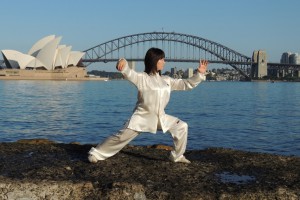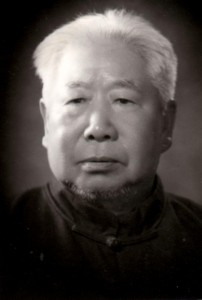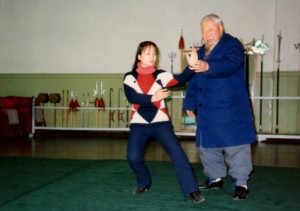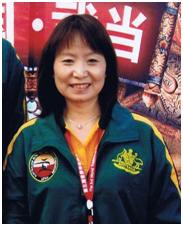Tai Chi in Sydney
Discover the essence of Tai Chi in Sydney with Pei Lei Wushu Association. Embrace the art of Tai Chi, also known as Taijiquan, through our expert-led classes. Explore the fluidity of movement and gracefulness inherent in this traditional Chinese exercise and martial art form.
Tai Chi, or Taijiquan, translates to “Supreme Ultimate Fist” or “Two Extremes Boxing.” It emphasizes the harmonization of mind and body, harnessing mental intention, body mechanics, and internal energy. Our classes encompass a range of techniques, from gentle, slow-paced forms to advanced, energetic movements incorporating “explosive force” or fajin.
At Pei Lei Wushu Association, we uphold the foundational principle of Tai Chi: the balance of Yin and Yang energies. Through Tai Chi practice, we delve into the interplay of complementary forces, reflecting in techniques like forward-backward, full-empty, and attack-defense.
Experience the inclusive nature of Tai Chi suitable for all ages and fitness levels. Whether you seek relief from ailments like arthritis or stress disorders or aim to enhance flexibility and strength, Tai Chi offers holistic benefits. It serves as both a moving meditation and a dynamic fitness regimen, fostering mental clarity and physical well-being.
Explore various styles of Tai Chi, including “bare hand” routines, weapon forms, and pushing hands exercises. Pei Lei Wushu Association specializes in Traditional Yang-style Tai Chi, preserving the lineage passed down from Grandmaster Fu Zhong Wen to Master Alice Dong. Join us on the journey to unlock the transformative power of Tai Chi practice in Sydney.
[embedyt] https://www.youtube.com/watch?v=ZsqVz7pox1o[/embedyt]
Traditional Yang Style Tai Chi
CARRYING ON THE LEGACY OF GRANDMASTER FU ZHONG WEN

Yang-style, is the most widely practiced and popular of the major styles of Tai Chi. Most modern, standardised forms such as 24-form and 42-form draw heavily on the traditional Yang style but have been modified over the years or combined with other styles. Pei Lei Wushu emphasises traditional Yang-style training in the lineage of Grandmaster Fu Zhong Wen.
While the true origins of Tai Chi are hotly debated, it is known that the founder of Yang-style Tai Chi, Yang Luchan trained in the village of Chenjiagou in the early 19th century where he learned the previously insider-only martial arts practices of the Chen family. Upon returning to Beijing, Yang developed a reputation as an unparalleled martial artist and devised his own unique system of Tai Chi based on his many years of training, teaching it to the Imperial Palace Guards. Yang and his sons were sought out by aspiring martial artists hoping to learn from their skills and attracted large numbers of students.

However, it was Yang Luchan’s grand-son, Yang Cheng-Fu who truly popularised Yang Tai Chi, smoothing out some of the more difficult movements in the style and adopting a larger frame approach to the Tai Chi forms that enabled more people to master the art. Yang Cheng-Fu was extraordinarily popular as a teacher and gathered many dedicated students and famous disciples such as Chen Weiming, Cheng Man Ching and Zhao Bin. It is said by some though, that no other student represented Master Yang’s teaching with as much accuracy and skill as Fu Zhong Wen.
Fu Zhong Wen would travel across China with his master Yang Cheng-Fu, diligently working to spread the practice of Tai Chi and representing the art in pushing hands and other competitions. He achieved an extraordinarily level of attainment in the art of Tai Chi and, upon his master’s death, continued to work to spread Tai Chi to the world, establishing the Yongnian Tai Chi Association, dedicated to the principles of diligence, perseverance, respect, and sincerity.

While teaching in Shanghai, Grandmaster Fu took a number of Wushu athletes as students, amongst them our headmaster Alice Bei Dong. Master Alice studied traditional Yang-style with Grandmaster Fu for many years, becoming officially recognised as a generational successor to the art of Yang-style Tai Chi.
Traditional Yang-style Tai Chi is exemplified by slow, flowing movements and larger frame stances. The bare hand form is performed at an even pace with no stops, each movement connecting to the next. It is a very gentle, low impact practice that will gradually build strength and competency in the student.
The art also includes straight sword (jian), sabre/broadsword (dao), force emission (fajin) and pushing hands (tui shou) techniques. As taught by Pei Lei Wushu, students build their way towards the full 85 movement bare hand form through smaller routines (8, 18 and 28) that introduce new skills and movements and give the student as sense of achievement as they advance through the routines. Basic understanding of the full form leads students to continue to develop skills in weapons and pushing hands.
When teaching Tai Chi movements, Pei Lei Wushu emphasises intent and application to ensure students understand the purpose behind all of the movements. Even if self-defence is not the students goal, understanding the basic function of the techniques ensures the proper attention to detail, structural alignment and maximising the flow of energy throughout the form.
Traditional Yang-Style Resources
Master Alice and her instructors teach a traditional curriculum of Yang-style Tai Chi. Beginner students work their way up through shortened routines (8,18 and 28 Form) to the full 85 movement Traditional Yang form. The short routines are intended to introduce new students to Yang Tai Chi slowly, in manageable sections of increasing difficulty. We also offer training in the traditional 51 Sword (Jian) Form, 13 Broadsword/Sabre (Dao) and Pushing Hands (Tuishou).

